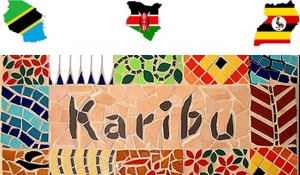Language/Swahili-individual-language/Vocabulary/Animals-and-Wildlife
| ◀️ Nominalization — Previous Lesson | Next Lesson — Plants and Vegetation ▶️ |
As a Swahili language teacher, I understand the importance of teaching my students about the rich culture and unique wildlife of Africa. In this lesson, we will learn the Swahili names for some common African wildlife, including big cats, elephants, giraffes, and primates.
Consider exploring these related pages after completing this lesson: Education & At the Post Office.
Wildlife in Swahili
Here are some common animals you may encounter in Swahili-speaking countries, along with their Swahili names and pronunciations:
| Swahili (individual language) | Pronunciation | English |
|---|---|---|
| Simba | [ˈsimba] | lion |
| Chui | [ˈtʃui] | leopard |
| Duma | [duːma] | cheetah |
| Twiga | [ˈtwi.ɡa] | giraffe |
| Tembo | [ˈtem.bo] | elephant |
| Viboko | [viˈbo.ko] | hippopotamus |
| Kifaru | [kiˈfa.ru] | rhinoceros |
| Kifaru cha pwani | [kiˈfa.ru tʃa ˈpwani] | sea turtle |
| Sokwe | [soˈkwe] | gorilla |
| Tumbili | [tumˈbi.li] | monkey |
These are just a few examples of the wide variety of wildlife found in Africa. Take some time to practice pronouncing their names and commit them to memory. You never know when you might need them!
Fun Facts About African Wildlife
Did you know that elephants are one of the few animals that can recognize themselves in a mirror? Or that lions are the only cats that live in groups called prides? Here are a few more interesting facts about African wildlife:
- Giraffes have the same number of neck vertebrae as humans (7), but each one is much longer.
- Cheetahs are the fastest land animals, capable of reaching speeds up to 70 mph.
- Hippos can hold their breath for up to 6 minutes underwater.
- The African elephant is the largest land animal on Earth.
- The biggest threat to gorillas and other primates is habitat loss due to deforestation and mining.
Learning about the fascinating creatures that live in Africa is not only educational, but it can also foster a greater appreciation for this unique part of the world. Whether you're planning a safari or just watching a nature documentary, knowing the Swahili names for these animals can enhance your experience and deepen your understanding of the region.
In conclusion, I hope you found this lesson both informative and fun. In the next lesson, we will continue to explore the natural world by learning the Swahili names for common plants and vegetation. Keep up the great work!
Other Lessons
- Numbers and Counting
- Mammal
- Body
- Countries and Continents
- Geography and Landscapes
- Geography
- Transportation
- Birds
- Days of the week Siku
- Days, Months, and Seasons
| ◀️ Nominalization — Previous Lesson | Next Lesson — Plants and Vegetation ▶️ |

